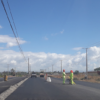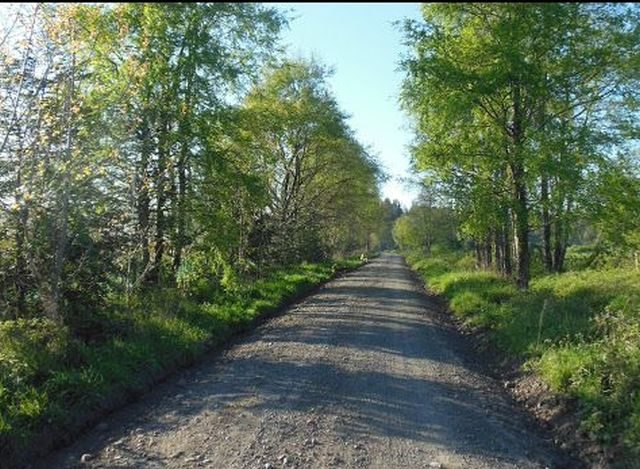Investing in Chile? Read this!
Investing in Chile? Read this!by Darren Kaiser Just a few hours south of Chile’s capital city of Santiago, some very important changes are underway right now in two specific sectors of the local real estate market. Unless you spend a decent amount of time in these areas, you’ve probably never heard of them because up until now they’ve received very little media coverage. But I guarantee that once you understand the profound effects these changes or catalysts are going to have on their respective local markets, you’re not going to want to miss out on what’s happening here. Catalyst #1- PASO PEHUENCHE INTERNATIONAL PASS First dreamt up by an Argentine viceroy in the early 1800s, Paso Pehuenche is a massive infrastructure project set to one day become the primary route between Chile and Argentina. Located about 200 miles south of Santiago and over 2,500 feet lower than passes further to the north, Paso Pehuenche is the obvious natural overland route between the Atlantic and Pacific Oceans. Unfortunately, thanks to political pressure at the time, when Chile and Argentina built the first fully paved overland route connecting the two countries nearly 40 years ago, they built it at Paso Los Libertadores, located several hours to the north of Paso Pehuenche. Paso Los Libertadores sits at about 11,000 feet above sea level in an extremely rugged section of the central Andes Mountains (some of the peaks in the area top out at over 20,000 feet). The route is quite cumbersome in winter months due to avalanches, a long series of hairpin turns leading up to the pass, and frequent delays and closures. Little by little, as authorities on both sides of the border realized the complications involved with using Paso Los Libertadores as the main touristic and trucking route in the Southern Cone, they were basically obligated (in a practical sense) to begin investing in infrastructure along the Paso Pehuenche. By the end of 2013, the Chilean government had paved the highway on their side of the border all the way to the pass and in November of last year, Argentina finally finished paving their side of the highway which has led to a serious increase in tourist traffic traveling over the Paso Pehuenche. There are still a number of bypasses and sections of fourlane that need to be completed on the Chilean side and a few bridges that need to be replaced on the Argentine side but there’s no denying that this new international pass is in its final stages of completion. The most interesting part of all of this is that while there’s already been a serious uptick in economic activity along the Pehuenche route, the biggest growth spurt for this corridor is by all means yet to come. So far most of the traffic over the new international pass has been tourist traffic but once the final infrastructure improvements are finished, it’s only going to be a matter of time before Paso Pehuenche becomes the primary trade route between Chile and Argentina. When that happens, expect local real estate prices to be readjusted accordingly and for future appreciation rates to dwarf those of today. Ñuble is the northernmost province of Chile’s 8th Region but is currently in the process of gaining regional status of its own and becoming Chile’s 16th Region (which would be the first time to happen in Chile in over a decade). The territorial breakdown in Chile is as follows; the country itself is broken down into regions, regions are broken down into provinces, provinces are broken down into comunas (or counties), and comunas are broken down into sectors or barrios (neighborhoods). Starting from the lowest or most local level, administration and planning for barrios or sectors is usually done through territorial organizations known as Junta de Vecinos which are more or less the equivalent of a neighborhood association or committee (there is actually one structure, an organizacion comunal, which is ranked below the Junta de Vecinos in regards to jurisdiction, more on that another day). Above the barrios or sectors, the Comunas actually have their own mayors and city halls which normally have anywhere from 10 to 100 full time employees including their own building departments, cultural or community affairs departments, etc. Above the Comunas, you have the Provinces (or Provincias). The administrative entity for each province is known as a Gobernacion which has its own building and immigration department and employs a provincial governor. Finally, above the Provinces, you have the Regions. When you go from provincial to regional status, you have an enormous jump in administrative capacity or authority (including the number of paid governmental positions). In each of Chile’s Regions, a regional capital exists which is home to around 15 different Seremis or Regional Ministries (such as the Ministry of Public Works, Education, Agriculture, Mining, etc) with each of the Regional Ministries employing a director and numerous technicians and assistants. Ñuble Province has already passed several of the hurdles involved with achieving regional status but the process is still far from being complete. While it’s obviously way too early to publish an exact number, I’d personally estimate that when Ñuble does gain full regional status, it will mean a minimum of several hundreds of thousands of dollars in new monthly salaries in the city of Chillan alone, plus serious investments in infrastructure stretching from the coast near the town of Cobquecura up to the border of Argentina near Los Nevados de Chillan. When you factor in the smaller scale “multiplier effects”, and the fact that Ñuble is currently one of Chile’s more impoverished provinces, it becomes quite clear just how much of an impact this could have on the area. Getting Exposure If you’d like to learn more about how to best gain exposure to the changes currently taking place along the Paso Pehuenche corridor and in Ñuble Province (as well as how to watch out for investment pitfalls in the area), you’re going to want to attend the 2017 Fall Celebration that I’m hosting in Talca at the end of the month. In over six years of personally investing and brokering real estate transactions in central Chile, this is the first time I’ll be sharing details on specific investment and lifestyle opportunities in these areas with a wider audience. If you have any interest in investing, spending time, or living in Chile, you’re not going to want to miss this event. For an itinerary and information on how to reserve a spot, send us an email at info@propertychile.com and well get back to you with the details right away. Darren Kaiser Darren is a developer and expert in real estate investment in Chile. We recommend him as an investment consultant. He conducts private and group real estate investment tours in the Maule Region and lives near Talca, a prime farming area. (We also have on good authority that it’s a prime surfing area, one of Darren’s favorite pastimes.) Darren is author of the book, Where to Buy Chilean Real Estate in 2014. ______________________________________________ Disclaimer: The information contained in this publication and from any communication related to this publication is for information purposes only and does not intend to provide any legal, financial or other advice. |

